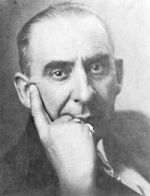Now in the mental symptoms also you must be very cautious. You may ask questions about the sexual functions. it is normal, everybody tells. You say, But there are people who would like to have intercourse every day or twice a day.” “No” he says “it is not so much”. “How much?” Once a month or once in two months” I am astonished to know this. “Why so?” Because” he says “I don’t feel like it, because I am tired” and now he tells you “I have no good erections”. Now you begin to know he is impotent.
That is why he does not like to have it often. Or if it is woman they tell you “Oh I have aversion to it I like my husband. He is lovely but the moment I come towards him, I almost feel to cry because I feel I cannot have an intercourse. I must enjoy it, but I cannot. I must play the act all the time.”So, you see you begin to know that what it is. You may say also “There are some people who when they were young were excited.” “Yes” the patients says “I was also like that.” You always give the example of somebody else. So they will tell all about themselves. I had a patient. He had convulsions in the midst of coition. This is a rare symptom. We have a remedy for this (Bufo)
I had another one who wets his bed regularly with prostatic fluid or semen and whenever he goes to his wife he has erection alright but not one drop of semen comes. It is curious, is it not? There are other who have blood instead of semen. So you may ask such question and you begin to know some of the things.
A lady with sepia or Causticum symptoms but who is very much excited for intercourse is not a sepia or Causticum. You have made a mistake in interrogation for it is Sepia, Bromium or Causticum where you know they hate intercourse. And in this way it is interesting.
It is true that besides the homoeopathic remedy, Chinese acupuncture helps very much in those cases. Of course when you do homoeopathy, do your homoeopathy. I hate mixing any other pathy, because it interferes with homoeopathy in a way. You must avoid any other therapeutics and remedies but when you use any other way of tackling the patient either by massage or by osteopathy or things of that kind or by acupuncture, you are using therapeutics which help it. Acupuncture is the Chinese method of touching the seven hundred and twelve points that are in the body, where the resistance of the skin is less and where currents of energy, vital energy are flowing out at different points.
You must know these points. It is a very hard question a question of memory which is terrible because you must know the names of the points in chinese and their number, where it is situated and so on. But it is interesting. The patient comes, for example with some disorder that is also difficult to cure with homoeopathy. She comes with a severe pain and is unable to lift the arm. She cannot you know comb the hair, in the morning. But you just prick on another part of the body perhaps in the foot at a certain. You see suddenly she can move, not tomorrow or an hour later but at once!
The movement you prick she can do this. Sometimes it holds for ever sometimes you must come in (and repeat it) after eight days again but the result is so quick, so amazing so astonishing like your remedy. If the pain is the right side, if it is on the cubital side, if the pain is on the front or middle, according to this we may prick different places on the foot, but when it is on the other side, we must use a golden needle. And it depends you know also on the direction of the prick whether you turn it to the right or left whether you prick tow times or one time slowly if you prick first a little and then you go down quickly and soon.
This is not a question of psychological effect in hysterical patients. Unfortunately, if you don’t touch them at the right points the effects is nil but if you prick at the right point the effect is like that of the homoeopathic remedy. You can give your hysterical patients many remedies but there is nothing no effect. But the moment you give them the right remedy they are cured. So is the case with acupuncture. An asthmatic comes to you gasping for breath. You prick him on the right points and he will suddenly say, “Oh, I can breathe”. It is marvellous. But when you have not touched the right upon there is no result.
Then this question of hysteria I am sorry to say in my 45 years of practice I have never found a hysteric patient inventing a disease. As Hahnemann said the patient may exaggerate the symptoms or diminish his feelings. But patients who invent all their symptoms, I have never seen. Exaggeration, diminution, sometimes falsification. Yes But inventing the whole disease I have never seen. So you see about hysteria. I have never used this rubric (hysteria) in the repertory. It is very easy to speak of hysteria like we speak of rheumatism when we do not know anything about the disease. So we use the words wrongly.

